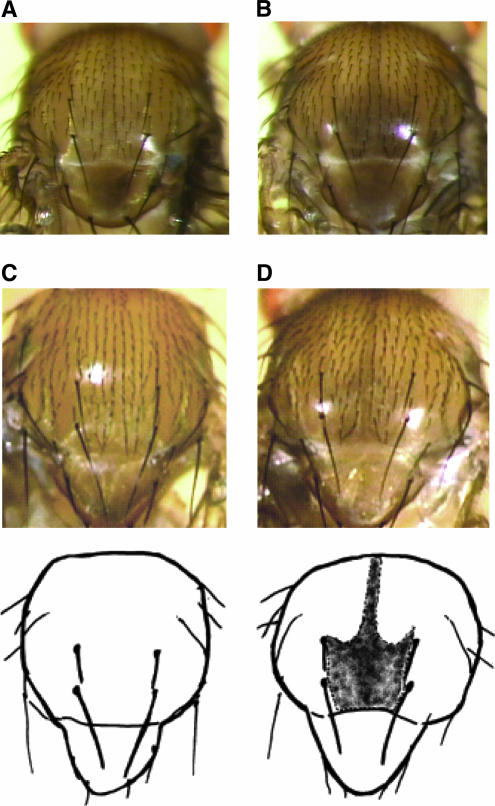Figure 4.—
Thoracic trident pigmentation phenotype obtained from complementation test with ebony and ebony RNAi knockdown experiment. (A) Dorsal view of the thorax segment of the Mel6/e1 heterozygote. (B) Dorsal view of the thorax segment of the TW1/e1 heterozygote. The flies in A and B were reared at 25°. The results were almost identical when eAFA, Df(3R)e-H4, and Df(3R)e-R1 were used as ebony mutants (data not shown). (C) Dorsal view of the thorax segment of the wild-type control, w1118; P{w+mc = Actin5C-GAL4}/+. (D) Dorsal view of the thorax segment of the RNAi knockdown individual, w1118; P{UAS-ebony-IR}/+; P{w+mc = Actin5C-GAL4}/+. The insert, P{UAS-ebony-IR} contains two fragments of 500 bp ebony cDNA as an inverted repeat (IR). These lines were crossed to w1118; P{w+mc = Act5C–GAL4}17bFO1/+ strain to induce IR RNA in the whole body. w1118; P{w+mc = Act5C–GAL4}17bFO1/+ was obtained by backcrossing y1 w*; P{w+mc = Act5C–GAL4}17bFO1/TM6B, Tb1 to w1118 strain for 10 generations. Adult flies carrying one copy of the UAS-IR construct and one copy of the GAL4 driver were investigated for the thorax pigmentation. The flies in C and D were reared at 20°.

